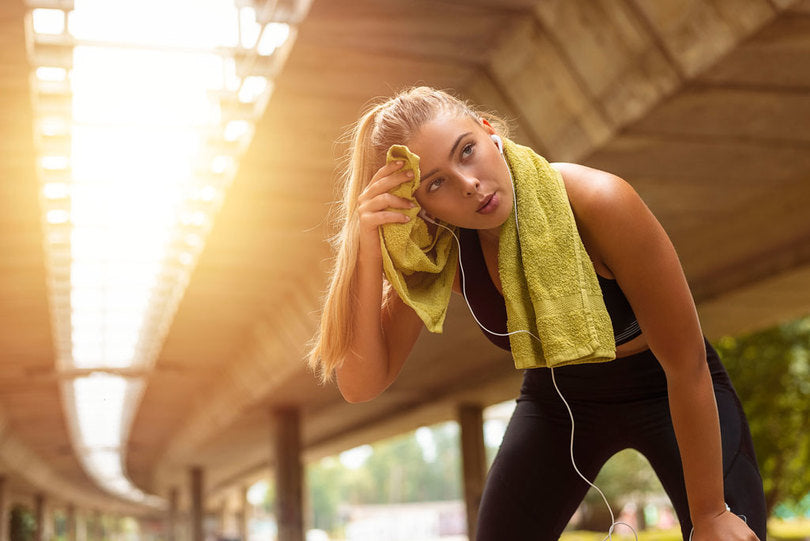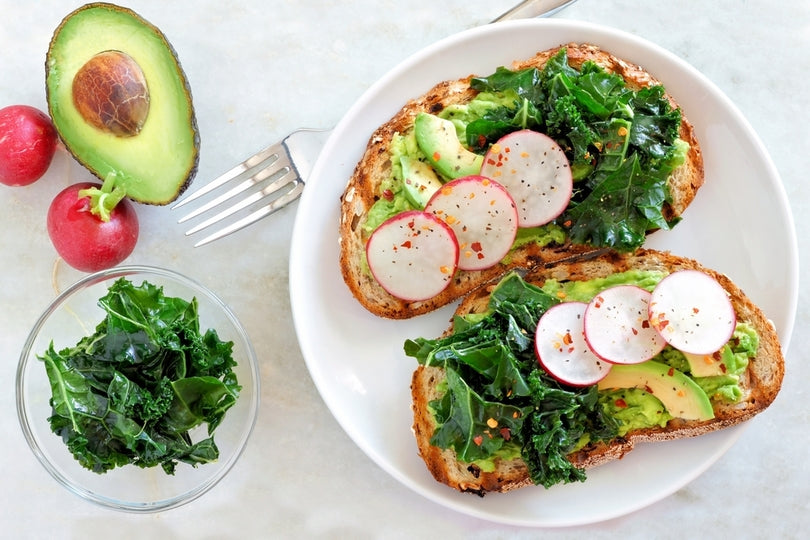Cardio You Can Do At Home Without A Treadmill


When most people think of starting to do cardio, running or getting on a treadmill is the first thing that comes to mind.
I know that many women following my programs in the Sweat app don’t enjoy running and would prefer to get their cardio done quickly by working out at home,
The good news is that there are other options if you want to do cardio at home! Here are some exercises you can try if you want to do a home cardio workout.
Jump to:
Don’t I need a treadmill to do cardio at home?
The first thing you need to know is that cardio doesn’t have to mean walking or running. While these are forms of cardio, cardio is any exercise you do that increases your heart rate and gets you breathing a little harder!
This means you can do cardio at home — even if you don’t have a treadmill — by doing exercises that get your heart rate up.
Cardio exercises to do at home
Here are some of my best cardio exercises to use for a cardio workout at home.
These exercises can be used to warm up before a resistance workout or string a few sets together for a stand-alone cardio session.
For those ladies following my programs, you can use these exercises to tick off one of your LISS or HIIT cardio sessions.
You don’t need any equipment for these exercises, so it’s easy to get started!
Burpees
Burpees are definitely one of my favourite exercises because they work your whole body!
They also get your heart rate up fast, which is why I’ve included them in these cardio exercises to do at home.
You don’t need much space, just enough room for a yoga mat.
- Plant both feet on the mat shoulder-width apart. This is your starting position.
- Bend at both the hips and knees to place your hands on the mat on either side of your feet, ensuring that your spine remains in a neutral position.
- Jump both of your feet back so that your legs are completely extended behind you, resting on the balls of your feet. Your body should be in one straight line from your head to your heels.
- Jump both of your feet forwards in between your hands, once again, ensuring that your feet remain shoulder-width apart.
- Propel your body upwards into the air. Extend your legs below you and your arms above your head.
- Land in the starting position, ensuring that you maintain “soft” knees to prevent injury.
- Repeat.
You can modify your burpees for a low-impact cardio workout by using a bench and stepping up rather than jumping. You can also make them tougher by using weights!
Step ups
This exercise is great for cardio, and it also helps to strengthen your legs!
- Place a step horizontally in front of you and plant both feet on the floor shoulder-width apart. This is your starting position.
- Firmly plant your entire left foot on the step, ensuring that your knee is in line with your toes. Push through the heel of your left foot to extend your leg. Avoid pushing through your toes to prevent placing additional pressure on your shin and knee. As you extend your left leg, release your right leg and step up onto the step.
- Reverse this pattern back to the floor to return to the starting position, starting with your left leg.
- Firmly plant your entire right foot on the step, ensuring that your knee is in line with your toes. Push through the heel of your right foot to extend your leg. Avoid pushing through your toes to prevent placing additional pressure on your shin and knee. As you extend your right leg, release your left leg and step up onto the step.
- Reverse this pattern back to the floor to return to the starting position, starting with your right leg.
- Continue alternating between left and right sides.
Butt kicks
This simple plyometric exercise gets your heart rate up quickly. Butt kicks boost muscular strength and endurance in your hamstrings and glutes, while dynamically stretching your quads.
Make sure the movement is driven by your hamstrings rather than your feet. You should land gently on the balls of your feet, not your heels.
Start slowly before increasing the pace, making sure that your core is engaged, your spine is neutral, and your chest is open.
- Plant both feet on the floor, shoulder-width apart. This is your starting position.
- Keeping your weight on your left leg, bend your right leg to bring your foot to your glutes.
- Lower your right leg and plant your foot on the floor. Keeping your weight on your right leg, bend your left leg to bring your foot to your glutes.
- Once you are comfortable with this movement, increase your speed so that you are hopping from one foot to the other.
- Continue alternating between right and left legs.
Mountain climbers
Mountain climbers get your heart rate up and work almost every muscle group in the body. Some of the muscles used are the deltoids, biceps, abs, quads, hamstrings and hip abductors — it’s a total body workout in one exercise!
You can do this exercise at your own pace, but remember to keep perfect form when you increase the speed.
1. Place both hands on the yoga mat shoulder-width apart and both feet together behind you, resting on the balls of your feet. This is your starting position.
2. Keeping your left foot on the floor, bend your right knee and bring it in towards your chest.
3. Extend your right leg to return to the starting position.
4. Keeping your right foot on the floor, bend your left knee and bring it in towards your chest.
5. Extend your left leg to return to the starting position.
6. Continue alternating between right and left.
Reverse lunge and hop
This cardio exercise will challenge your coordination and increase your heart rate!
- Plant both feet on the floor shoulder-width apart. This is your starting position.
- Carefully take a big step backwards with your right foot. As you plant your foot on the floor, bend both knees to approximately 90 degrees, ensuring that your weight is evenly distributed between both legs. If done correctly, your front knee should be aligned with your ankle and your back knee should be hovering just off the floor.
- Extend both knees and transfer your weight onto your left foot. Propel your body upwards into the air and extend your left leg below you. At the same time, elevate your right foot to bring your knee into your chest.
- Land in a neutral standing position, ensuring that you maintain a ‘soft’ knee to prevent injury. At the same time, lower your right leg to return to the starting position, but without resting your foot on the mat.
- Repeat on the same side, and then repeat the same number of reps on the other side.
Star jumps
1. With your arms by your sides, plant both feet on the floor. This is your starting position.
2. Quickly jump both feet outwards so that they are wider than your hips. At the same time, raise your arms upwards and outwards from the sides of your body so that your hands almost directly meet above your head.
3. Quickly jump both of your feet inwards and lower your arms to return to the starting position. Repeat.
High knees
Keeping your heart rate up with this movement is the aim of the game! Maintain a strong core and stay light on your feet as you keep your body moving. Remember to control your breathing and hold a consistent pace.
- Plant both feet on the floor slightly further than shoulder-width apart.
- Keeping your weight on your left foot, bend your right leg to bring your knee into your chest.
- Lower your right leg and plant your foot on the floor. Keeping your weight on your right leg, bend your left leg to bring your knee into your chest.
- Once you are comfortable with this movement, increase your speed so that you are hopping from one foot to the other.
- Continue alternating between right and left legs.
Broad jump
Broad jumps work to improve the reaction of the fast-twitch muscle fibres in your body. This plyometric exercise will strengthen your legs and core!
Start slowly to get the move right, and increase the force of the jump when you become comfortable.
- Plant both feet on the floor shoulder-width apart. This is your starting position.
- Swing your arms backward and, at the same time, bend at both the hips and knees, ensuring that your knees remain in line with your toes. Continue bending your knees until your upper legs are parallel with the floor. Ensure that your back remains between a 45- to 90-degree angle to your hips. This is called squat position.
- Swing your arms to propel your body upwards and forwards, once again, landing in squat position. Ensure that you maintain ‘soft’ knees as you land to prevent injury.
- Repeat!
How to do cardio at home
You might be thinking that it would be really hard to do one of these exercises long enough for a cardio workout!
I recommend combining the exercises to create a circuit!
- Choose pairs of exercises to create a circuit. For example: butt kicks and broad jumps.
- Decide how many reps of each exercise to do — ten on each side is a good starting place!
- Set a timer for a specific time. I suggest seven minutes!
- Do each exercise alternately until the timer goes off!
- Rest for one minute.
- Start another circuit with two different exercises!
- Four circuits is 28 minutes — workout done!
No home workout is complete without music, so pump up your top workout playlist (or use one of mine!) to keep you energised as you do your circuit!
Create your own home cardio workouts using these exercises
Next time you want to get your cardio done at home, try creating your own workout using these exercises. You can also get more from your training with my tips for working out at home.
This can be especially helpful for anyone who is feeling time-poor, as completing a cardio session may be a lot more achievable if it can be done in the home environment.
Using these exercises, you can achieve your fitness goals with short workouts that effectively raise your heart rate.
How do you do your cardio at home? I’d love to know, leave a comment below!
* Disclaimer: This blog post is not intended to replace the advice of a medical professional. The above information should not be used to diagnose, treat, or prevent any disease or medical condition. Please consult your doctor before making any changes to your diet, sleep methods, daily activity, or fitness routine. Sweat assumes no responsibility for any personal injury or damage sustained by any recommendations, opinions, or advice given in this article.




<#= c.user.username #><#= moment(c.created_at * 1000).fromNow() #>
<#= c.html_body #> <# if (c.images) { #>
<# } #>